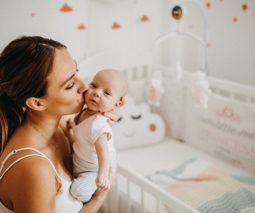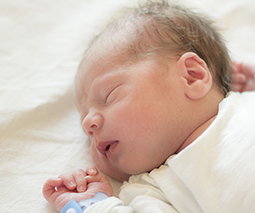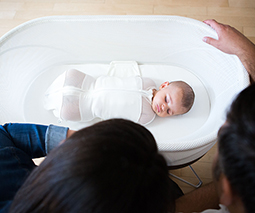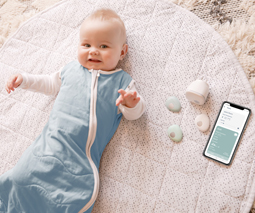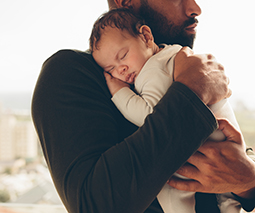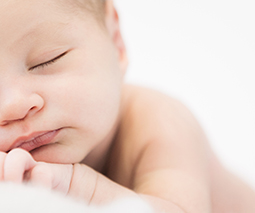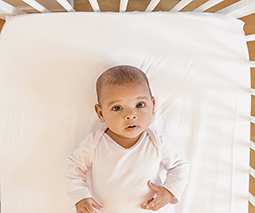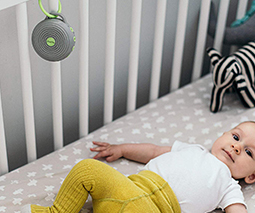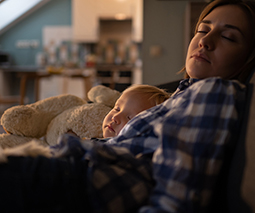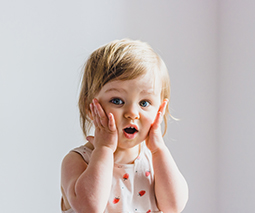7 things you must do if you co-sleep with your baby
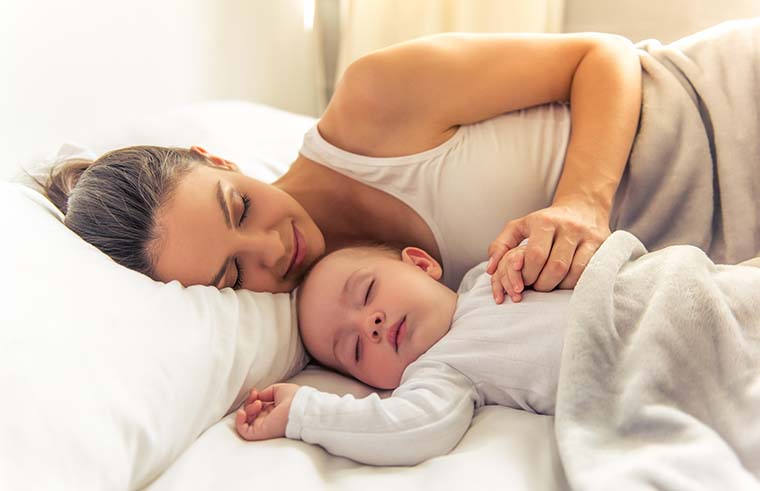
Babyology podcast Feed Play Love spoke with Red Nose Australia educator Lorraine Harrison about how to sleep babies safely in a range of different environments. Of course, host Shevonne Hunt turned to the curly question of co-sleeping.
Co-sleeping is not recommended
Let us just say from the get-go that Red Nose Australia recommends parents avoid co-sleeping with their baby to reduce the risk of Sudden Unexpected Death in Infancy (SUDI) and Sudden Infant Death Syndrome (SIDS).
“The safest place to sleep a baby is in their own safe sleeping place in the same room as an adult care-giver,” Red Nose advise on their website.
“Red Nose recommends sleeping a baby in a cot next to the parents’ bed for the first six to twelve months of life as this has been shown to lower the risk of SUDI.”
Listen to the full interview on Feed Play Love:
They go on to say that sharing a sleep surface – such as a parent’s or family bed – with a baby can increase the risk of SUDI.
“A considerable proportion of SUDIs occur on a shared sleeping surface,” Red Nose tell us.
A risk minimisation approach
With all of that in mind, many families do still choose to co-sleep and we wanted to find out how to make their babies as safe as possible.
“Many couples do resort to co-sleeping in the early months and years,” Shevonne told Lorraine. “How can people do it safely if this is a choice they make?”
“Red Nose has very much a risk minimisation approach to co-sleeping,” Lorraine confirmed.
“There are some inherent risks in co-sleeping in certain environments and we know that out of the number of babies who continue to die today, probably about 60 percent of those babies are in a co-sleeping environment.”
That’s a huge figure isn’t it? And one worth paying attention to. If you must sleep with your baby in the bed with you, here are some ways minimise the risks slightly.
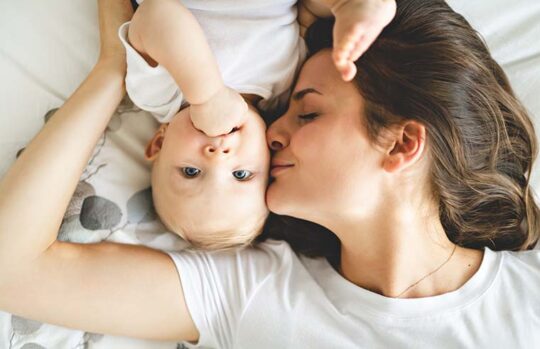
7 things you MUST do if you co-sleep with a baby
1. Don’t sleep with a very tiny baby
“We would suggest, in terms of reducing that risk, to avoid having baby in bed with you under about three or four months of age,” Lorraine says.
2. Avoid swaddling or wrapping your baby up
“If the choice is to have a baby in bed with you, baby shouldn’t be wrapped up in a sleeping environment,” Lorraine advises.
3. Sleep baby on their back
“Babies should still be on their back,” Lorraine confirmed, in line with the usual safe sleeping guidelines.
4. Keep pillows and bedding well away
“Adult pillows and adult bedding can be quite a risk,” warns Lorraine.
5. Keep baby’s face and head uncovered
“We should still try and keep their head and face uncovered.”
6. Don’t sleep baby between parents
“A lot of the information would suggest that baby is at less risk in a co-sleeping environment if they’re on the side of one parent rather than in between both parents,” Lorraine advises.
7. Stay informed
“We would certainly say ‘be informed’ … We have some really good information on our website on sharing a sleep surface … and will help in providing a less risky environment for baby.”
And guess what? If you simply avoid co-sleeping altogether, you can minimise the SUDI and SIDS risks even more. Too easy!
 Need some more baby sleep advice? Our Parent School sleep experts can help. Click to find out more or book a one-on-one session.
Need some more baby sleep advice? Our Parent School sleep experts can help. Click to find out more or book a one-on-one session.
